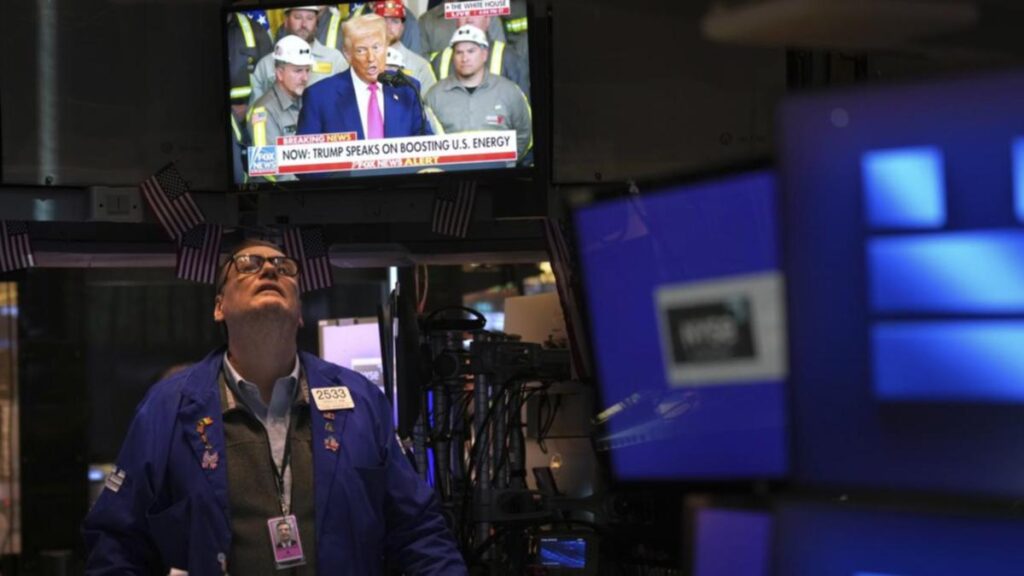Wall Street’s main indexes have inched higher as investors lap up cheaper technology stocks in a choppy session that remained centred on tariff moves as China retaliated with more levies on US goods.
Most megacap and growth stocks rose, with Apple and Nvidia adding nearly 2.5 per cent each and Microsoft up 1.2 per cent. The tech sector was up 1.5 per cent.
“The reflex to buy the dip is very strong and certainly the wipeout you’ve seen in tech stocks makes them cheap relative to where they were,” said Chris Beauchamp, chief strategist at IG.
Despite the early gains, all three benchmarks were down more than 10 per cent from the levels seen before the reciprocal US tariff were announced last week.
China on Wednesday responded by imposing additional levies of 84 per cent on all US goods from April 10, up from the 34 per cent previously announced.
As the tariff war escalated and hopes of concessions faded, investors rushed to exit stocks, industrial commodities and even government bonds.
The upcoming US earnings season will offer more insights about the health of corporate America as investors fear a hit to economic growth.
“The longer this trade dispute goes on and the more it escalates with one side adding to what the other side is doing, it will continue to erode investor and consumer confidence,” said Sam Stovall, chief investment strategist at CFRA Research.
In early trading on Wednesday, the Dow Jones Industrial Average rose 94.72 points, or 0.25 per cent, to 37,740.31, the S&P 500 gained 31.96 points, or 0.64 per cent, to 5,014.73 and the Nasdaq Composite gained 222.93 points, or 1.46 per cent, to 15,490.84.
Healthcare stocks fell 1.5 per cent as drugmakers slid after Trump reiterated plans for “major” tariffs on pharmaceutical imports. Eli Lilly was down 3.7 per cent and AbbVie 4.1 per cent.
Oil majors Exxon Mobil and Chevron fell over 1.5 per cent each, as crude prices plunged to more than four-year lows.
The CBOE Volatility index – seen as Wall Street’s ‘fear gauge’, hovered near its highest since August last year at 51.66 points.
Meanwhile, the tariff-driven turmoil prompted investors to dump safe-haven US Treasuries for a dash of cash, pushing yields higher.
The yield on the 10-year note was near its highest since late February, last at 4.356 per cent. If gains sustain, it would mark the biggest weekly jump since 2001.
Minutes from the Fed’s March policy meeting are due later in the day, while a consumer price inflation reading is set for Thursday, which could offer more clues on the inflation trajectory.
US-listed shares of Chinese companies also shed a bulk of their premarket gains after China announced retaliatory tariffs. The iShares MSCI China ETF was last up 3.6 per cent.
Delta Air Lines gained 6.1 per cent as the carrier beat first quarter profit estimates. The company though pulled its 2025 financial forecast and projected current-quarter profit below expectations.
Declining issues outnumbered advancers by a 1.63-to-1 ratio on the NYSE and by a 1.14-to-1 ratio on the Nasdaq.
The S&P 500 posted no new 52-week highs and 90 new lows while the Nasdaq Composite recorded three new highs and 391 new lows.



